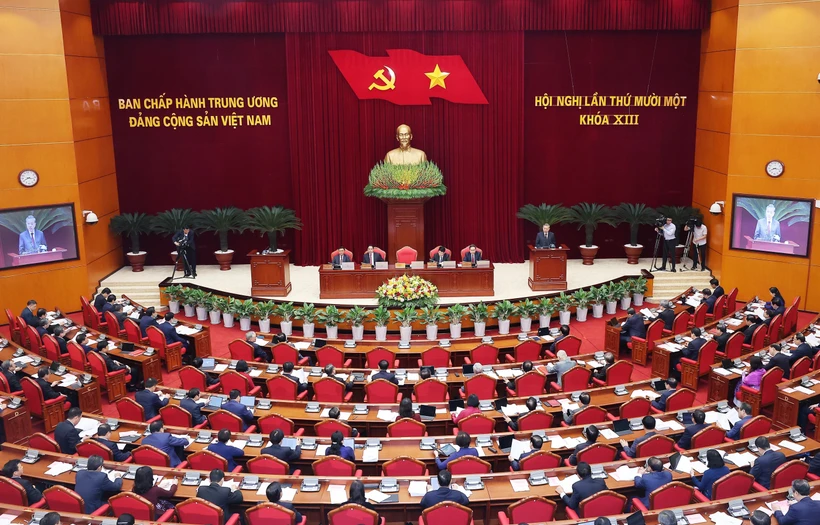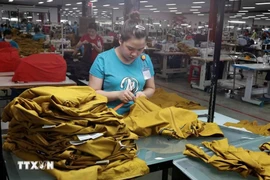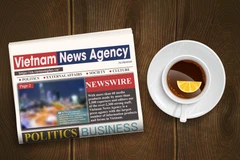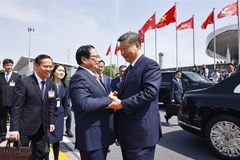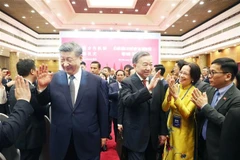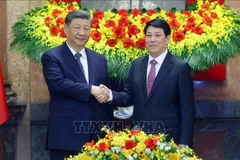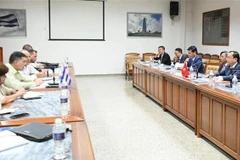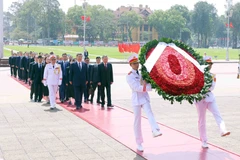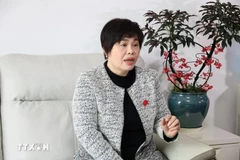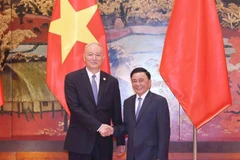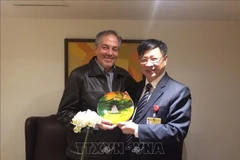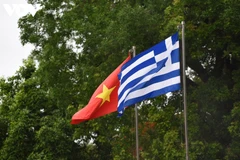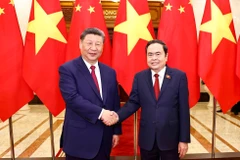Hanoi (VNA) – The 11th plenum of the 13th Party Central Committee, which took place from April 10-12, was considered a historic meeting with historic decisions made in the country’s new revolution phase, including the continued restructuring of the political system’s organisational apparatus, the rearrangement of administrative units, and the adoption of a two-tier local administration system.
Right after the plenum, the Ministry of Home Affairs will work with relevant ministries and sectors to organise a national conference to implement the decisions among all ministries, sectors and localities.
Turning point in reforms
In the past four months, in line with conclusions of the Party Central Committee, the Politburo and Secretariat have led efforts to streamline and downsize central-level agencies of the Party, Government, National Assembly, and the Vietnam Fatherland Front (VFF). Reports showed impressive results in reducing organisational layers, boosting operational efficiency, and cutting costs, reflecting the revolutionary nature of this reform. However, as Party General Secretary To Lam noted in the opening session of the 11th plenum, the political system’s structure has yet to be perfect, particularly at the local level.
To continue this revolutionary cause of transformation, the Politburo and Secretariat convened multiple sessions to examine the matter thoroughly. They ultimately reached consensus on a comprehensive proposal for rearranging administrative units and forming a two-tier local admistration model. The proposal also includes plans to restructure local Party organisations, the VFF, and consolidate socio-political and Party and State-assigned mass organisations, and realign the judicial system, including the People’s Courts and People’s Procuracies.
This is an issue of great public interest, General Secretary Lam stressed, noting that the Politburo and Secretariat have gathered extensive feedback, and it is clear that the overwhelming majority of Party members and people strongly support and highly value this policy, hoping it will be implemented swiftly.
The proposal is of historic significance, not only in terms of restructuring administrative units and civil employees, but also in decentralising power, re-arranging administrative boundaries, allocating resources, and redesigning development spaces, with the aim of bringing the administration closer to the people, better serving the people, and opening up a new complexion for national development, with a long-term vision for at least 100 years.
After three days of discussions, the Party Central Committee reached consensus on the two-tier local administration structure, comprising provincial (provinces and centrally–run cities) and communal levels (communes, wards, and special zones directly under provinces or centrally-run cities). From July 1, 2025, district-level administrative units will be dissolved, after Resolution on amendments and supplements to a number of articles of the 2013 Constitution and the amended 2025 Law on Organisation of Local Governments comes into effect. After the emergence, Vietnam will have 34 provinces and centrally-run cities, while the number of communal-level units is set to be reduced 60–70% nationwide.
Along with administrative reforms, five key socio-political organisations and 30 mass associations entrusted by the Party and State will be merged under the VFF, with the VFF Central Committee leading coordination efforts. The trade unions of civil servants and armed forces will be dissolved, and union dues will be reduced for members.
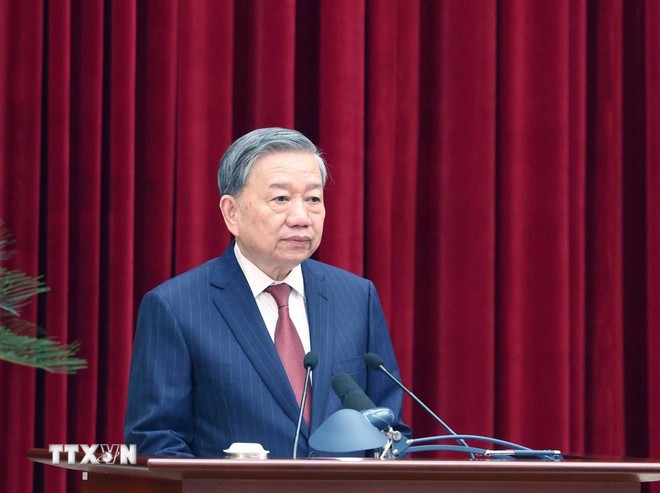
The Party Central Committee also approved reforms to streamline the People’s Court and People’s Procuracy systems, which will now operate under three levels - supreme, provincial, and regional. The high-level and district-level courts and procuracies will cease operations.
Party organisations will be rearranged in line with the new two-level administrative structure. District-level Party Committees (in districts, townships, cities, and urban districts) will be disbanded. New Party organisations will be established at the provincial and communal levels in accordance with the Party Charter and regulations.
Better meeting people’s demands
Closely following the core turning-point decisions made at the plenum, many Party members and people have pinned high hopes on this historic restructuring of administrative units, the formation of two-tier administrations, and the reorganisation of mass organisations and the judicial system.
Ngo Thanh Phong, former Editor-in-Chief of An Giang Newspaper, said that the scheme is expected to create a leaner political system’s organisational apparatus, reduce public spending, and enhance service efficiency for people and businesses. Merging localities into larger administrative units is a strategic move - one that brings geographic, economic, and governance advantages. A two-tier administration structure will help streamline procedures, and save time and costs, he held.
Phong also emphasised the need for strong, tailored policies to retain capable and talented civil servants while removing those who are incompetent, power-hungry, or abuse their positions.
Meanwhile, Pham Ngoc Hung, former Principal of the Hau Giang School of Politics, noted that although there are challenges ahead, the administrative overhaul is both necessary and aligned with Vietnam’s development trajectory. Ultimately, the aim is to build a people-centred administration – one of the people, by the people, and for the people.
Dr Vo Dac Truyen, former Deputy Director of Da Nang C Hospital, underlined that abolishing the district level, if done scientifically and sensibly, will help reduce a intermediate layer, simplifying the system, and reduce operation costs. Greater authority at the commune level will bring officials closer to the public and speed up service delivery.
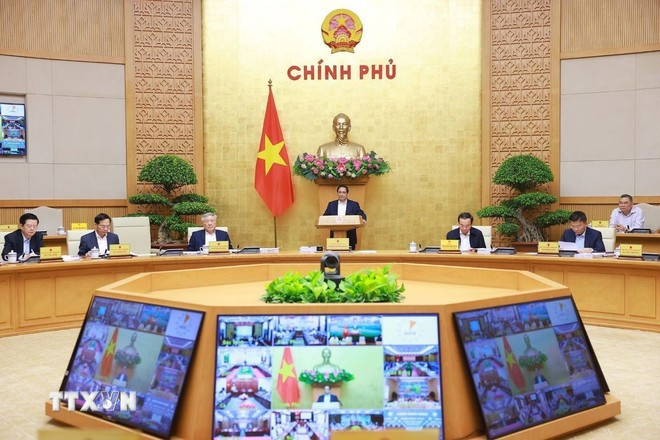
Regarding the reorganisation of the People’s Courts and Procuracies, Le Vu, a lecturer at the University of Technology and Education - the University of Danang, said the move will centralise operations, and raise judicial standards. It also paves the way for wider adoption of digital tools, such as e-courts and digital prosecution platforms, which can save time and increase accountability, Vu added.
Ensuring uninterrupted operations after rearrangement of administrative units
To effectively implement the Politburo and Secretariat’s conclusions, the Government has issued Resolution No. 74/NQ-CP outlining a roadmap for the rearrangement of administrative units and the establishment of the new two-tier local administration model. The resolution sets out specific timelines and tasks.
Ministries and central agencies have been instructed to submit legal documents or issue guidelines to resolve issues arising from the restructuring process, ensuring no legal gaps or operational disruptions occur as the new administrative structure takes effect. All preparations must be completed by June 30.
At its regular meeting for March and subsequent online conference with localities, the Government and the Prime Minister urged ministries and local authorities to accelerate the design of the new two-tier local administration model, link it with institutional reforms, and enhance the efficiency of public administration.
According to the Ministry of Home Affairs, as of April 10, it had finalised the draft amended Law on Organisation of Local Governments, which will be submitted to the National Assembly at its 9th session. The draft law comprehensively revises key provisions, establishing a legal foundation for the two-tier structure of provincial and communal administrations.
Meanwhile, the Ministry of Education and Training has issued guidelines to ensure the continued and improved quality and effectiveness of educational institutions in restructured localities. Provincial People’s Committees have been tasked with reviewing administrative responsibilities currently handled at the district level and reallocating them to either provincial departments or communal authorities to ensure continuity and avoid disruptions.
In parallel, the Standing Boards of the Party Committees of Lao Cai and Yen Bai have jointly reviewed their cooperation over the 2020–2025 term and agreed on the plan to merge into a single province. They also agreed to establish a steering committee and its support team to direct and implement the mergence plan./.
